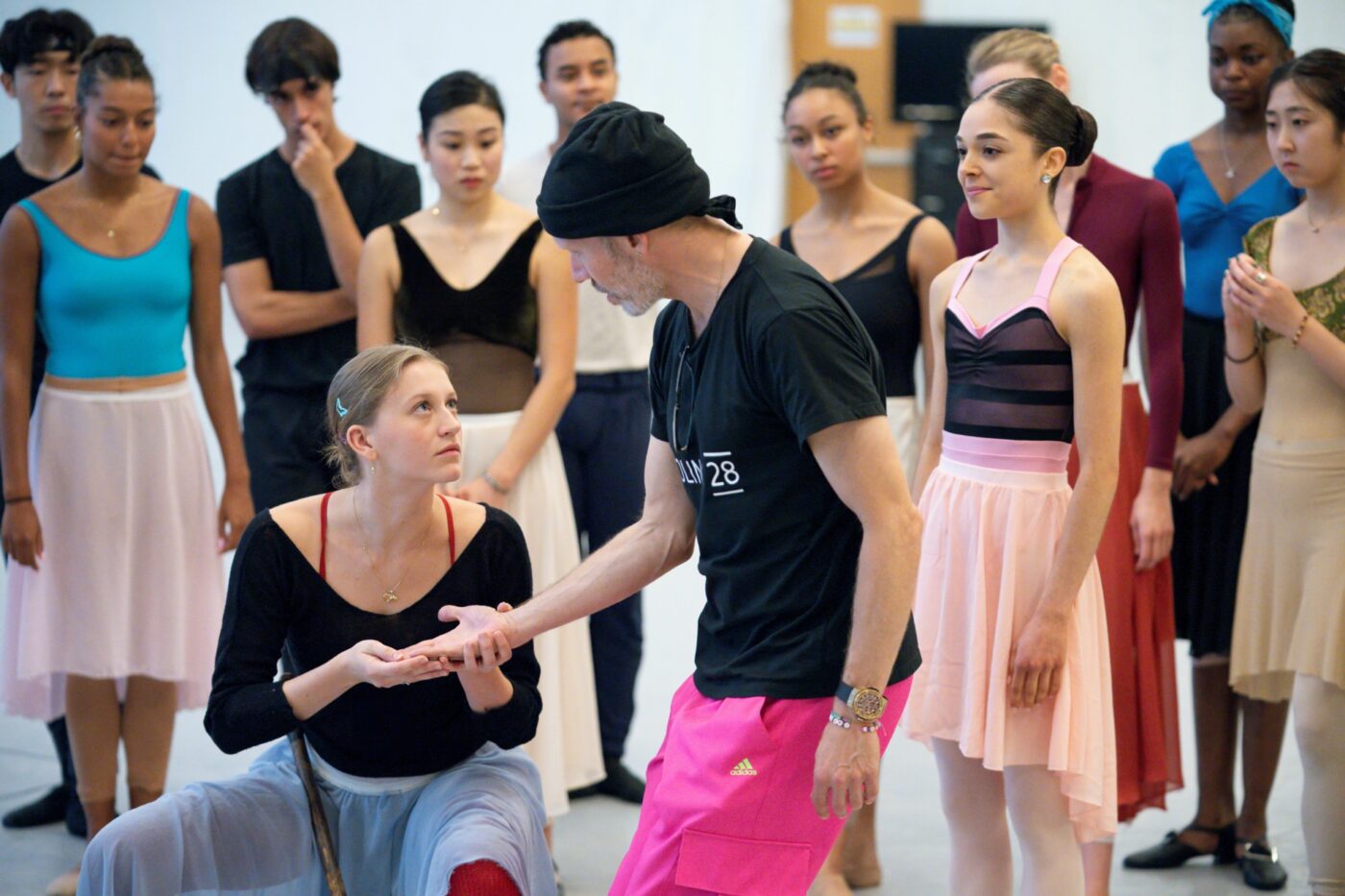In Conversation with Choreographer Johan Kobborg: Part II
September 7, 2023

First performed in 1836, August Bournonville’s La Sylphide is as relevant now as it was when it graced the stage of the Royal Danish Theatre in Copenhagen over 180 years ago. In Part II of our interview with Johan Kobborg, we talk with the choreographer, dancer and artist about keeping Bournonville’s choreographic style alive, interpreting the characters and storyline today, and what it’s like to be back in Atlanta.
There are many ways to interpret the characters of La Sylphide. How do you use the character personas (or the dancers’ interpretation of these personas) to move and enthrall your audiences?
As the choreographer staging this production, my key role is to pass on the Bournonville style. I’m here to teach dancers the actions and explain why they are done in a certain way. But while I can go through the choreographic steps, it is the artists themselves who need to project the story with clarity and conviction, bring the characters to life and ignite the viewer’s emotions. I’m not going to dictate how the characters or narrative should be interpreted. My job is to provide an experience where you, the audience, can go on your own journey and pursue your own dream. My real purpose is to start another story, your story.
Bournonville created significant roles with specific choreography for both male and female dancers. What can we expect to see from Atlanta Ballet dancers in La Sylphide?
The Bournonville choreographic style is unique and specific, and uses a lot of very intricate, precise, and fast footwork. Another recognizable feature is the minimalist use of the upper body, which for me, having been brought up in this style, is very organic. But for others performing these roles, the movements may feel rather constrained. It can take a while to adapt to this style. In dance, we often use the arms to create volume, to gain momentum and to speak louder. Bournonville’s style is more contained, even the expressions of joy are emphasized in confined manner. It’s not flashy, it doesn’t say “look at me.” The more I watch ballet recordings from the early 1900s, the more I recognize the Bournonville style. It was how a lot of people danced back then. Theaters were smaller and distance was more constrained. And that dictated the style of movement, which had to be more horizontal than vertical. Nowadays, we’re used to performing in larger theaters. My job is therefore to take a style that was originally presented in a small space and make it work for a much larger theater and audience. I must move with the times, but also keep the ballet as close as possible to its traditional and authentic style.
You're presenting your production and additional choreography of Bournonville’s La Sylphide once again to Atlanta audiences. How does it feel to be back in Atlanta and to be working with Atlanta Ballet again?
I love being in Atlanta and I’m having such an enjoyable time working with the dancers. It has been a few years since I was last here and quite often when I’m staging a production, I need to ask the dancers to do more, to act more. It’s different here. On day one we rehearsed the group scene where Madge is telling everyone’s fortune, and it was just perfection. I give credit to Gennadi Nedvigin and his artistic team, and of course, the dancers themselves, who very naturally take on the styles of human interaction. It’s great being here, I feel very much at home.
What special moment or nuances should the audience look for when watching this performance? Do you have a favorite?
Whenever I watch La Sylphide, there are elements that speak clearer to me than others. I don’t think it is my place to tell audiences where they should focus their gaze. They should allow themselves to take what they want from this story. Everyone will have a distinct perspective: some may see it as a fairytale ballet with an ethereal woman, others may see a romantic man in search of true love. Or they may even view it with a more contemporary lens and see a young man who is struggling to find peace and questioning his own existence. As people, and I certainly know I do, we question “should I do this, should I do that.” We can question a place, a job even – it doesn’t have to be a relationship like it is in this story. La Sylphide can represent anything you want it to represent. And I think we can all relate to the “what if” in this ballet. The dreamer in me almost wishes that La Sylphide would focus on how we should all just follow our hearts, be passionate, and believe that everything will be okay. In this ballet, life doesn’t turn out for the best. La Sylphide is a wonderful ballet. Delicate dance movements combine with expressive storytelling and you can choose how you want to interpret the characters and narrative. The ballet has multiple layers, and depending on the cast you see in the roles, your perspective may change. Your view of good and bad, love and less love, may shift. La Sylphide may speak to you in different ways. And I believe that’s why we keep going to the ballet. If you enjoy ballet, I recommend you see La Sylphide more than once, because the artists will take you on a different journey each time.
Johan Kobborg will make a guest appearance as Madge in the Saturday evening performance of La Sylphide. Lead Casting has been announced.
Meet all the characters, interpret the story your way and come on a journey with us as Atlanta Ballet presents La Sylphide, September 15-17 at the Cobb Energy Performing Arts Centre. Click here to purchase tickets.